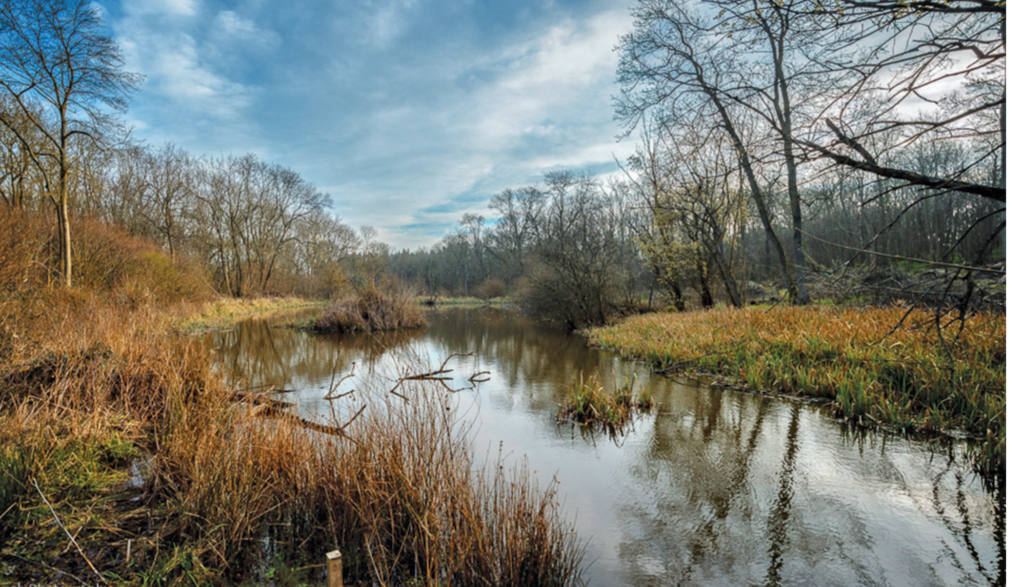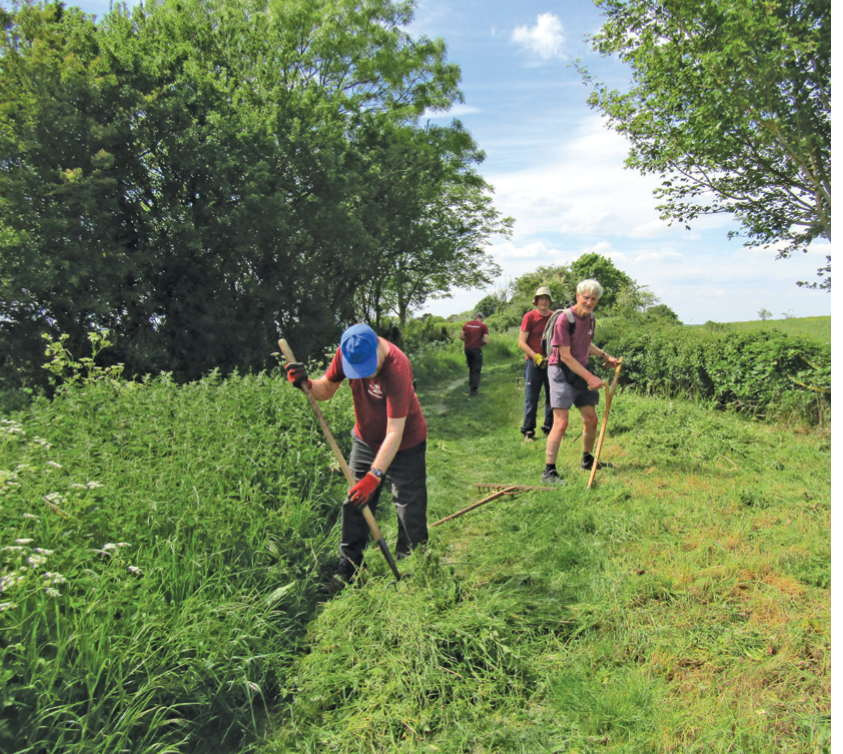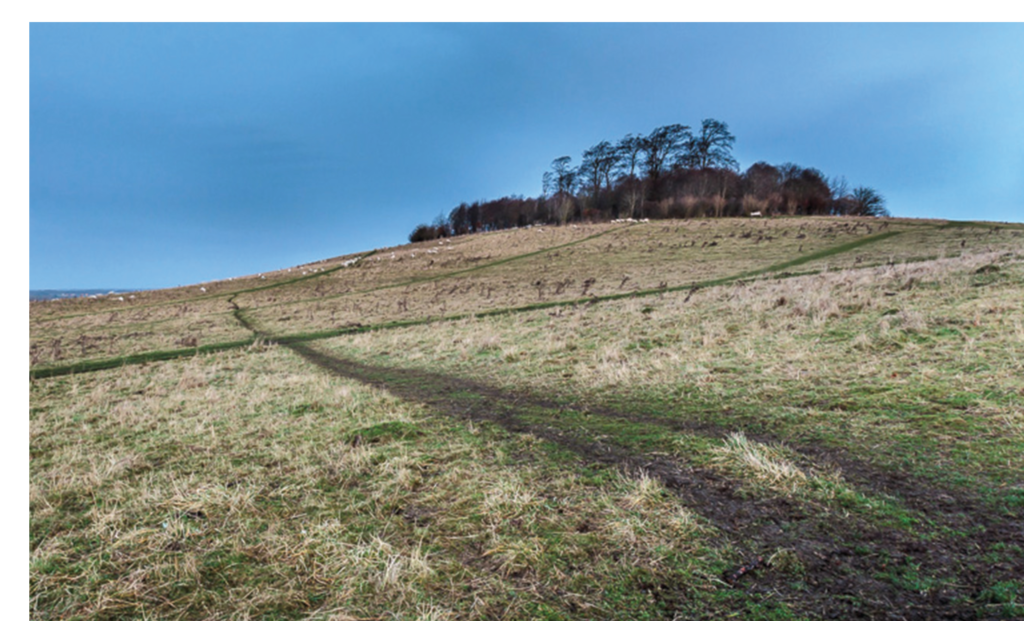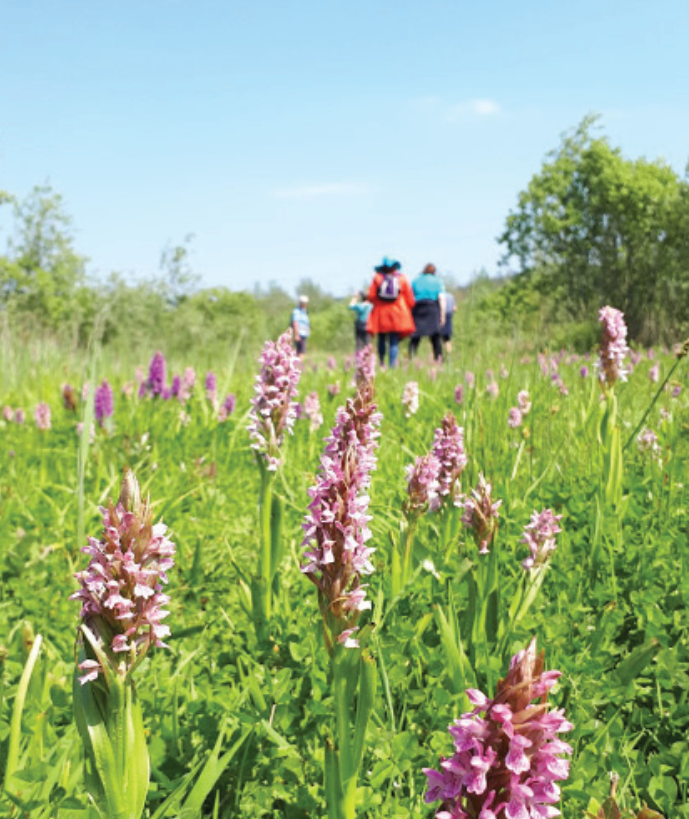Taking a look at a clear-sighted charity that cares for the environment

I wrote a feature about the Sylva Foundation based at Long Wittenham in Oxfordshire. At the time, I took the opportunity to explore the beautiful countryside and found, to my surprise, just a short distance away another environmental charity that predates Sylva and which was founded by Sir Martin and Lady Audrey Wood, also patrons of Sylva. I had a long conversation with the Earth Trust’s new communication manager, Ruby Glasspool, who was really enthusiastic about promoting its message to readers of this magazine. So I wanted to know what sets this charity apart.
Its website states: ‘Earth Trust is an environmental learning charity. We are the proud guardian of 500 hectares of farmland, woodland, and wetland on the bank of the River Thames. We champion accessible natural green spaces and our mission is to give you the opportunity to engage with your environment through the beautiful green spaces we look after.’
The land the Earth Trust cares for is steeped in history. It strives to manage the land in a way which balances conservation, farming and public access. The farm is managed in a financially and environmentally sustainable way and showcases how farming and biodiversity can work together while ensuring that these green spaces are as accessible as possible to the public. Here are a few examples of the work.
It currently does:
Rive of Life II – Creating vital wetland habitats
Earth Trust received a Water Environment Grant, through the European Agricultural Fund for Rural Development, for an exciting new partnership project to revive and create natural riverside wetland systems and increase biodiversity. Building on the success of the first wetland creation project, River of Life, near Shillingford, Earth Trust partnered with local landowners, Church Farm Partnership and The Hurst Water Meadow Trust, to improve water ecosystems along the River Thames and River Thame.

Land next to rivers and streams can provide healthy life support systems for all life through biodiverse, functioning, natural freshwater ecosystems. To do this, land needs to be able to slow down and filter water and this can be done through the addition of wetland features such as ponds and water channels that are within the floodplain, some of which are connected to the river. The creation of these features alongside mosaics of other natural habitats, such as woodland, improve the quality of the landscape. These features also provide havens for spawning fish and wildlife essential to a thriving living system, from dragonflies to kingfishers and otters.

Our first River of Life landscape scale project was hugely successful and pioneering. It created an incredible new wetland ecosystem on the Thames, demonstrating the management of water and wetlands in the landscape, and the benefits and value of water to society. Receiving the funding enabled us to work with other local landowners to build on this success, and re-wild more of Oxfordshire’s riverside,’ said Jayne Manley, chief executive of Earth Trust.
River of Life II will create these vital wetland habitats at three locations within the parishes of Long Wittenham, Little Wittenham and Dorchester- on-Thames: at Earth Trust’s Clifton Meadow on the south bank of the River Thames; at Church Farm north of Days Lock, owned by the Church Farm Partnership; and at Overy Mead on the Clearing a bank next to the open grassland using scythes and rakes banks of the River Thame, managed by The Hurst Water Meadow Trust. Once completed, the new habitats will include 16 ponds and seven backwater channels, plus wet woodland at each of the three locations, all of which will connect to the main river to provide a refuge habitat for fish.

The project will also fund the creation of several new ponds in Little Wittenham Wood, home to one of the country’s most significant populations of great crested newts. Nationally, populations have dramatically declined due to loss of habitat and these new ponds will help strengthen the population of newts and other amphibians as our climate changes in the future. Little Wittenham Wood is managed by Earth Trust and is a designated a Site of Special Scientific Interest (SSSI) and Special Area of Conservation (SAC) due to its importance as a habitat for great crested newts.
The funding will enable Earth Trust to put in place boardwalks among the features and way marking so that people can access and explore the wetland ecosystems. Pre-construction work has begun and includes discussions with local communities and other interested stakeholders, negotiating access agreements, archaeological and ecological surveys, and refining designs. The main earth works construction period will take place in summer 2020, followed by the final physical elements of the project relating to access and interpretation.
Jayne added: ‘River of Life has significant impact beyond these works. Re-wilding the River Thames and creating a functioning ecosystem is a demonstration of the creative thinking and action needed as we face up to the climate change challenges ahead. We need to radically rethink our approach to managing the Earth’s resources, such as water and soil, and accelerate projects that are going to sustain life on Earth.’


Ancient archaeological finds
Earth Trust is proud guardian to one of Oxfordshire’s most visited ancient scheduled monuments, the Wittenham Clumps. A new archaeological excavation currently underway as part of their new Gateway hopes to add fresh evidence to the story of the people who built its iconic hillfort.
The Earth Trust Centre, the heart of the Earth Trust working farm, is nestled at the foot of the Wittenham Clumps. The Clumps are steeped in history, with Roman, Bronze Age and Iron Age evidence being found on site. The curved ramparts of Castle Hill date from the Iron Age, though archaeological work has shown that it was also a Bronze Age settlement; it is now a Scheduled Ancient Monument.


The name Wittenham Clumps comes from the ‘clumps’ of beech trees which crown both hills. These are the oldest known planted hilltop beeches in England, dating back more than 300 years. The unique site is at the heart of the environmental charity’s working farm. Previous excavations, including famously by Time Team in 2004, have revealed a wealth of historical secrets and now a new investigation, led by archaeologists from DigVentures, has taken place downslope as the first stage of an exciting new project to improve visitor facilities at Earth Trust.
‘Earth Trust looks after 500 hectares of natural green spaces, rich in fascinating archaeology. This excavation gives us a chance to find out much more about the people who built the impressive Iron Age hillfort at Wittenham Clumps, by investigating other areas of occupation nearby,’ says Lisa Westcott Wilkins, co-founder of DigVentures. Previous excavations on site have found evidence of Bronze Age, Iron Age and medieval settlements, as well as several unusual Roman discoveries, including a raven shrouded in silk. ‘There are plenty of Iron Age pits on site and we’ve already uncovered loads of pots, as well as some Neolithic flint. We don’t know exactly what else we’ll find but a geophysical survey revealed what look like a number of Iron Age roundhouses and Roman buildings close to where we’ll be digging. The archaeological potential here is huge. We want to share the finds we do make with as many people as possible – it’s very exciting,’ adds Westcott Wilkins.


The visitor centre
Earth Trust has embarked on an exciting new project to improve visitor facilities at the heart of its working farm and engage more people in caring for our planet. The first stage of this project will see the building of a purpose-built education centre, Earth Lab, which will increase their capacity to run accredited courses, skills development, school trips, birthday parties and many more activities. To make way for the new building it had to demolish the existing storage hut that wasn’t fit for purpose.
This demolition has given access to previously un-investigated land. Although it didn’t know what would be uncovered by the dig, the site is so rich in history that the Trust wanted to share the experience with as many people as possible. A community excavation gives the opportunity to do just that, helping people to understand more about the unique natural landscape we care for. Earth Trust’s educational opportunities are underpinned by its green spaces and outdoor classrooms. Earth Lab will double the educational capacity enabling it to support STEM subjects, understanding of our environmental ecosystems as well as skills-based learning for adults and people with special needs.
These are just three examples of the work undertaken by the Earth Trust with the participation of volunteers and local communities and supported by various organisations. Talking with Ruby Glasspool, I caught just a hint in the conversation that there are going to be some exciting developments in the not too distant future. Do check out your part of the country in case there is a charity with similar environmental aims with which you can get involved.
To learn more visit:



Further reading
PHOTOGRAPHS COURTESY OF THE EARTH TRUST EXCEPT WHERE STATED
